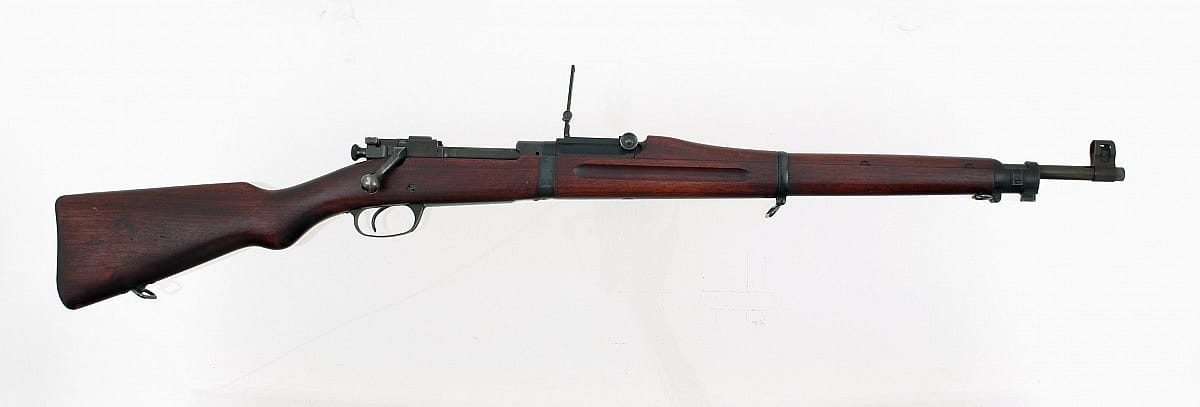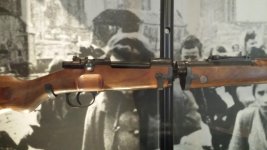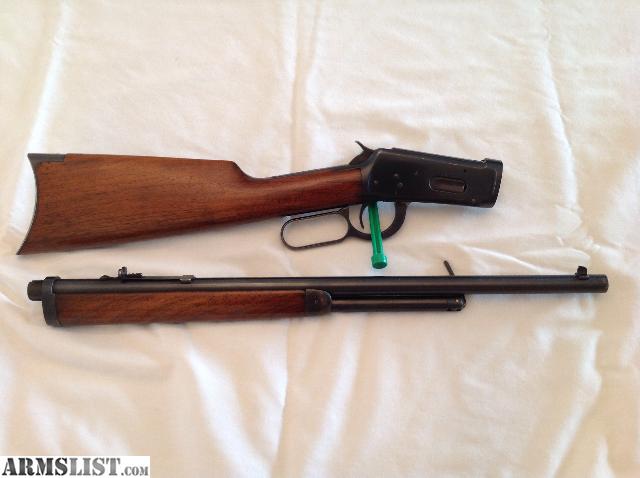
Richard Hobbs
MARKINGS
The gun began its life as a ‘Standard’ Moschetto mod.91/38. The quotation marks around ‘Standard’ are due to the date and manufacturer of this specific gun: every single part bears the Terni Arsenal markings. These markings can be found on the barrel, receiver, and as an official cartouche, on the stock. The barrel is marked ‘1941 Terni,’ while the stock carries a ‘1942’ date. As you might have noticed, Terni in 1941 was not producing Mod.91/38 carbines; its production was exclusively focused on Mod.91/38 and later Mod.91/41 rifles.
The Gun is Serial Number 2, branded on its stock as any other Italian Carbine. That both indicates that the gun was made by an Italian Arsenal and that more than one prototype were made.
1 Like

The CR39 (“crosse repliable”, or folding stock) is the paratrooper version of the MAS 36. The need for a more compact and transportable pattern was recognized almost as soon as the MAS 36 was finalized, originally for paratroops but in practice also for alpine troops. Two years were spent devising the new rifle, starting in 1937, and in 1939 is was formally adopted. The barrel was shortened about 5 inches (from 575mm to 450mm), and the wooden stock replaced by a cast aluminum stock that folded underneath the action. A unique and very cool sling design went Alon with the new stock; a spring winder (like a car’s seat belt) was fitted in the stock so that the sling would coil up neatly as the stock was folded. These winders are rather fragile, however, and usually broken today.
A small number of CR39s were produced before the 1940 armistice, and production restarted almost immediately upon liberation of St Etienne. The CR39 would remain in production until 1960, with almost 34,000 made in total. For more information, check out my new book, Chassepot to FAMAS: French Military Rifles 1866-2016 – now in stock and shipping!
2 Likes
T.C. Johnson’s Bolt Action Experiments

By Danny Michael
March 3, 2017
One of the most widely produced rifles in America during World War One was the P14 Enfield and the M1917. Designers based these guns on the same prewar British design and they differed in caliber, .303 and 30’06 respectively. But they, along with the 1903 Springfield became the basis for a series of experimental rifles at the Winchester factory. Thomas C. Johnson worked at the center of the project beginning in the summer of 1914. By the end of the war, Johnson built a full range of experimental rifles that led to his post-war designs.

Model A that was likely built in the summer of 1914. CFM Collection 1988.8.117
During the war, Winchester still had an eye to commercial designs, and Johnson’s rifles were a mix of military and commercial elements. These prototypes eventually blended features from the 1903 and M1917, but the first of the series, the Model A, bears striking resemblance to the 1903 Springfield. Johnson built a single Model A as a takedown rifle which retained military features like a full stock, handguard and military sights.

Model B. The early examples all kept the takedown feature even for the military stock guns, something very uncommon for service rifles of the period. CFM Collection 1988.8.111
The Model B also resembles a 1903 and this time Johnson made two. He built the two with takedown stocks and made one in a military configuration and the other with a sporting stock. Two Model Cs were also with takedown stocks, one military, and one sporting. At a glance, the Model C appears more like an M1917 than a 1903, but it isn’t quite a copy of either gun. All of the rifles through the Model C were chambered in 30’06.

Model C. This example appears more like a sporting M1917 but is really a blend of features from several guns. CFM Collection 1988.8.112

.

 . Abnehmbarer Lauf Detachable Barrel 98 | Page 2 | K98k Forum.
. Abnehmbarer Lauf Detachable Barrel 98 | Page 2 | K98k Forum. 


 Winchester 1892
Winchester 1892


